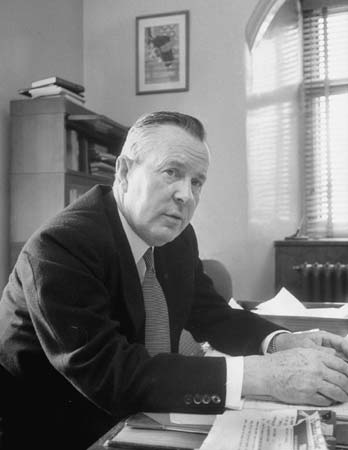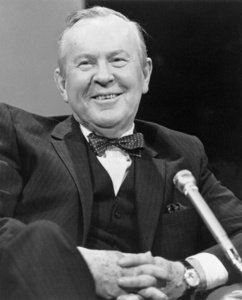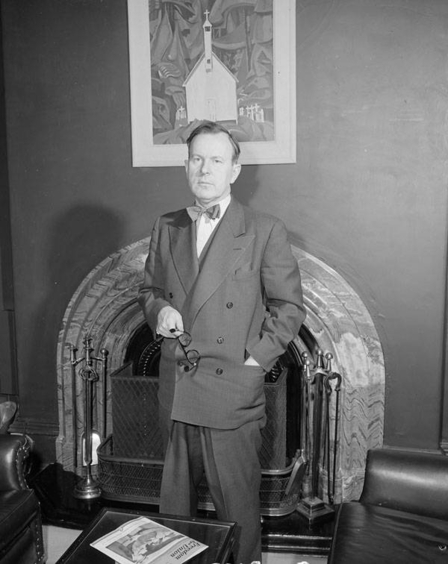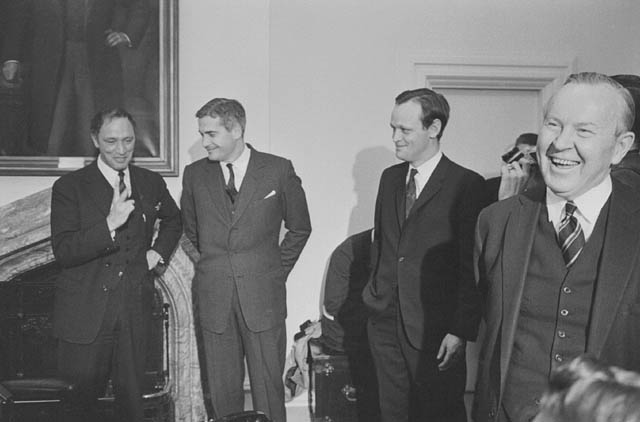<Back to Index>
- 14th Prime Minister of Canada Lester Bowles "Mike" Pearson, 1897
PAGE SPONSOR
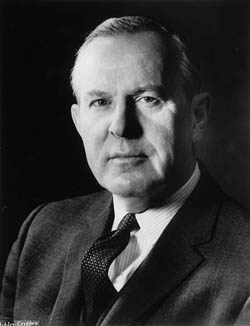
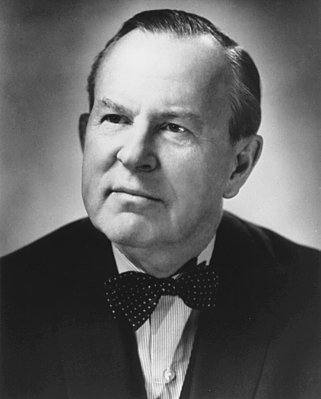
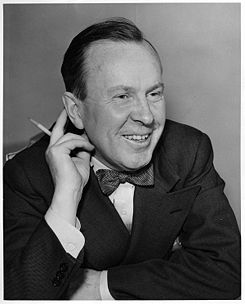
Lester Bowles "Mike" Pearson, PC, OM, CC, OBE (23 April 1897 – 27 December 1972) was a Canadian professor, historian, civil servant, statesman, diplomat and politician, who won the Nobel Peace Prize in 1957 for organizing the United Nations Emergency Force to resolve the Suez Canal Crisis. He was the 14th Prime Minister of Canada from 22 April 1963 to 20 April 1968, as the head of two back - to - back minority governments following elections in 1963 and 1965.
During Pearson's time as Prime Minister, his minority government introduced universal health care, student loans, the Canada Pension Plan, the Order of Canada and the current Canadian flag. During his tenure, Prime Minister Pearson also convened the Royal Commission on Bilingualism and Biculturalism. With these accomplishments, together with his ground - breaking work at the United Nations and in international diplomacy, Pearson is generally considered among the most influential Canadians of the 20th century.
Pearson was born in the town of Newtonbrook (now part of Toronto), the son of Annie Sarah (née Bowles) and Edwin Arthur Pearson, a Methodist (later United Church of Canada) minister. He was brother to Vaughan Whitier Pearson and Marmaduke Pearson. He graduated from Hamilton Collegiate Institute in Hamilton, Ontario, in 1913 at the age of 16. Later that same year, he entered Victoria College at the University of Toronto, where he lived in residence in Gate House and shared a room with his brother Duke. While at the University of Toronto, he joined the Delta Upsilon Fraternity. He was subsequently elected to the Pi Gamma Mu social science honor society's chapter at the University of Toronto for his outstanding scholastic performance in history and sociology.
At University of Toronto, he became a noted athlete, excelling in rugby union, and also playing basketball. He later also played for the Oxford University Ice Hockey Club while on a scholarship at the University of Oxford, a team that won the first ever Spengler Cup in 1923. Pearson also excelled in baseball and lacrosse as a youth, played golf and tennis as an adult, and as a result had the most intense and wide ranging sporting interests of any Canadian prime minister. His baseball talents were strong enough for a summer of semi - pro play with the Guelph Maple Leafs of the Ontario Intercounty Baseball League.
When the First World War broke out in 1914, he volunteered for service as a Medical Orderly with the University of Toronto Hospital Unit. In 1915, he undertook overseas service with the Canadian Army Medical Corps as a stretcher bearer with the rank of Private, and had a subsequent commissioning to the rank of Lieutenant. During this period of service he spent two years in Egypt and Greece. He also spent time in the Serbian Army as a Corporal and a Medical Orderly. In 1917, Pearson transferred to the Royal Flying Corps (as the Royal Canadian Air Force did not exist at that time), where he served as a Flying Officer until being sent home with injuries from two accidents; while training as a pilot at an air training school in Hendon, England, Pearson survived an airplane crash during his first flight.
In 1918, he was hit by a London bus during a citywide blackout and was sent home as an invalid to recuperate, and was then discharged from the service. It was as a pilot that he received the nickname of "Mike", given to him by a flight instructor who felt that "Lester" was too mild a name for an airman. Thereafter, Pearson would use the name "Lester" on official documents and in public life, but was always addressed as "Mike" by friends and family.
After the war, he returned to school, receiving his BA from the University of Toronto in 1919; he was able to complete his degree after one more term, under a ruling in force at the time, since he had served in the military during the war. He then spent a year working in Hamilton and Chicago, in the meat packing industry, which he did not enjoy. Upon receiving a scholarship from the Massey Foundation, he studied for two years at St John's College at the University of Oxford, where he received a BA with Second - Class honours in modern history in 1923, and the MA in 1925. After Oxford, he returned to Canada and taught history at the University of Toronto, where he also coached the Varsity Blues Canadian football team, and the Varsity Blues men's ice hockey team. In 1925, he married Maryon Moody (1901 – 1989), who was one of his students at the University of Toronto. Together, they had one daughter, Patricia, and one son, Geoffrey.
In 1927, after scoring the top marks on the Canadian foreign service entry exam, he then embarked on a career in the Department of External Affairs. Pearson was posted to London in the late 1930s, and served there as World War II began in 1939, until 1942 as the second - in - command at Canada House, where he coordinated military supply and refugee issues, serving under High Commissioner Vincent Massey. Pearson returned to Ottawa for a few months. He was assistant under secretary in Ottawa from 1941 until 1942. In June 1942 he was posted to the Canadian Embassy in Washington, D.C. as ministerial counsellor. He served as second - in - command for nearly two years. Promoted minister plenipotentiary, 1944, he became Canada's ambassador to the United States on 1 January 1945, until September 1946. He had an important part in founding both the United Nations and NATO. During the Second World War, he once served as a courier with the codename "Mike." He went on to become the first director of Signal Intelligence.
Pearson nearly became the first Secretary General of the United Nations in 1945, but this possibility was vetoed by the Soviet Union.
Canadian Prime Minister William Lyon Mackenzie King tried to recruit Pearson into his government as the war wound down. Pearson felt honored by King's approach, but resisted at the time, due to his personal dislike of King's interpersonal style and political methods. Pearson would not make the move into politics until a few years later, after King had announced his retirement as prime minister.
In 1948, Prime Minister Louis St. Laurent appointed Pearson Secretary of State for External Affairs (foreign minister) in the Liberal government. Shortly afterward, he won a seat in the Canadian House of Commons, for the federal riding of Algoma East in northern Ontario.
In 1957, for his role in defusing the Suez Crisis through the United Nations, Pearson was awarded the Nobel Peace Prize. The selection committee claimed that Pearson had "saved the world." The United Nations Emergency Force was Pearson's creation, and he is considered the father of the modern concept of peacekeeping. Leaders of the United States, France, the Soviet Union, and Great Britain (for best example) all had vested interests in the natural resources around the Suez Canal. Pearson was able to organize these leaders by way of a five day fly - around, and was by effect responsible for the development of the structure for the United Nations Security Council. His Nobel medal is on permanent display in the front lobby of the Lester B. Pearson Building, the headquarters of the Department of Foreign Affairs and International Trade in Ottawa.
St. Laurent was defeated by the Progressive Conservatives under John Diefenbaker in the 1957 election. After just a few months as Leader of the Opposition, St. Laurent retired and endorsed Pearson as his successor. Pearson was elected leader of the Liberal Party at its 1958 leadership convention, defeating his chief rival, cabinet minister Paul Joseph James Martin.
At his first parliamentary session as Opposition Leader, Pearson asked Diefenbaker to give power back to the Liberals without an election, because of a recent economic downturn. This strategy backfired when Diefenbaker showed a classified Liberal document saying that the economy would face a downturn in that year. This contrasted heavily with the Liberals' 1957 campaign promises.
Consequently, Pearson's party was badly routed in the election of that year, losing over half their seats, while Diefenbaker's Conservatives won the largest majority ever seen in Canada to that point (208 of 265 seats). The election also cost the Liberals their Quebec stronghold; the province had voted largely Liberal in federal elections since the Conscription Crisis of 1917, but the province had no favorite son leader, as they had since 1948.
Pearson convened a significant 'Thinkers' Conference' at Kingston, Ontario, in 1960, which developed many of the ideas later implemented when he became prime minister.
In the 1962 election, his party reduced the Tories to a minority government.
Not long after the election, Pearson capitalized on the Conservatives' indecision on installing nuclear warheads on Bomarc missiles. Minister of National Defence Douglas Harkness resigned from Cabinet on 4 February 1963, because of Diefenbaker's opposition to accepting the missiles. The next day, the government lost two non - confidence motions on the issue, forcing an election. In that election, the Liberals took 129 seats to the Tories' 95. Despite winning 41 percent of the vote, the Liberals came up five seats short of a majority largely due to winning only three seats in the Prairies. With the support of the New Democratic Party, Pearson won enough support to form a minority government, and was sworn in as prime minister on 22 April.
Pearson campaigned during the election promising "60 Days of Decision" and support for the Bomarc missile program. He never had a majority in the Canadian House of Commons, but he nevertheless managed to bring in many of Canada's major social programs, including universal health care, the Canada Pension Plan and Canada Student Loans, and established a new national flag, the Maple Leaf. He also instituted the 40 hour work week, two weeks vacation time and a new minimum wage.
On 15 January 1964, Pearson became the first Canadian Prime Minister to make an official state visit to France.
Pearson signed the Canada - United States Automotive Agreement (or Auto Pact) in January 1965, and unemployment fell to its lowest rate in over a decade. While in office, Pearson declined U.S. requests to send Canadian combat troops into the Vietnam War. Pearson spoke at Temple University in Philadelphia on 2 April 1965, while visiting the United States and voiced his support for a pause in the American bombing of North Vietnam, so that a diplomatic solution to the crisis may unfold. To the Johnson administration, this criticism of American foreign policy on U.S. soil was an intolerable sin. Before Pearson had finished his speech, he was summoned to Camp David to meet with Johnson the next day. Johnson, who was notorious for his personal touch in politics, reportedly grabbed Pearson by the lapels and shouted, "Don't you come into my living room and piss on my rug." Pearson later recounted that the meeting was acrimonious, but insisted the two parted cordially. After this incident, LBJ and Pearson did have further contacts, including two further meetings together, both times in Canada as the U.S. relied on Canada's raw materials and resources to fuel and sustain its efforts in the Vietnam War. Elderly Canadians often remember the Pearson years as a time Canada - U.S. relations greatly improved.
Pearson also started a number of Royal Commissions, including one on the status of women and another on bilingualism. They instituted changes that helped create legal equality for women, and brought official bilingualism into being. After Pearson, French was made an official language, and the Canadian government would provide services in both. Pearson himself had hoped that he would be the last unilingual Prime Minister of Canada and, indeed, fluency in both English and French became an unofficial requirement for Prime Ministerial candidates after Pearson left office.
His government endured significant controversy in Canada's military services throughout the mid 1960s, following the tabling of the White Paper on Defence in March 1964. This document laid out a plan to merge the Royal Canadian Navy, the Royal Canadian Air Force, and the Canadian Army to form a single service called the Canadian Armed Forces. Military unification took effect on 1 February 1968, when The Canadian Forces Reorganization Act received Royal Assent.
Pearson has been credited with instituting the world's first race - free immigration system. Credit for who created the policy, however, is disputed, and likely should be shared with John Diefenbaker. Diefenbaker's government in 1962 introduced a new race - free policy; however, under the 1962 policy, Americans were still given an advantage. It was in 1967 that Pearson introduced a discrimination - free points - based system which encouraged immigration to Canada, a forerunner of the system still in place today.
Pearson also oversaw Canada's centennial celebrations in 1967 before retiring. The Canadian news agency, The Canadian Press, named him "Newsmaker of the Year" that year, citing his leadership during the centennial celebrations, which brought the Centennial Flame to Parliament Hill.
Also in 1967, the President of France, Charles de Gaulle, made a visit to Quebec. During that visit, de Gaulle was a staunch advocate of Quebec separatism, even going so far as to say that his procession in Montreal reminded him of his return to Paris after it was freed from the Nazis during the Second World War. President de Gaulle also gave his "Vive le Québec libre" speech during the visit. Given Canada's efforts in aid of France during both world wars, Pearson was enraged. He rebuked de Gaulle in a speech the following day, remarking that "Canadians do not need to be liberated" and making it clear that de Gaulle was no longer welcome in Canada. The French President returned to his home country and would never visit Canada again.
Pearson chose the following jurists to be appointed as justices of the Supreme Court of Canada by the Governor General:
- Robert Taschereau (as Chief Justice, 22 April 1963 – 1 September 1967; appointed a Puisne Justice under Prime Minister King, 9 February 1940);
- Wishart Flett Spence (30 May 1963 – 29 December 1978);
- John Robert Cartwright (as Chief Justice, 1 September 1967 – 23 March 1970; appointed a Puisne Justice under Prime Minister St. Laurent, 22 December 1949);
- Louis - Philippe Pigeon (21 September 1967 – 8 February 1980).
After his announcement on 14 December 1967, that he was retiring from politics, a leadership convention was held. Pearson's successor was Pierre Trudeau, whom Pearson had recruited and made Minister of Justice in his cabinet. Trudeau later became Prime Minister, and two other cabinet ministers Pearson had recruited, John Turner and Jean Chrétien, served as prime ministers in the years following Trudeau's retirement. Paul Martin Jr., the son of Pearson's minister of external affairs, Paul Martin Sr., also went on to become prime minister.
Pearson served as Chairman of the Commission on International Development (the Pearson Commission) which was sponsored by the World Bank from 1968 - 69. He then served as Chancellor of Carleton University in Ottawa from 1969 until his death in 1972. Pearson is buried at Maclaren Cemetery in Wakefield, Quebec (just north of Gatineau), next to his close External Affairs colleagues H.H. Wrong and Norman Robertson.
